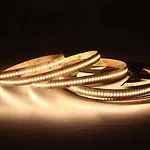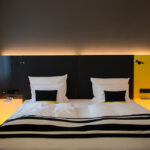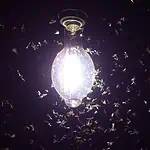People use LED lights around the world for several purposes. Many types of LED lights groom up the surroundings and provide a safe environment. The proper design of LED lights helps bring out the best of them.
LED lights are safe to use like any other modern traditional light. Therapists use lights in skin therapies. These lights don’t contain ultraviolet rays like other light sources. These lights, after recycling, become cost-efficient. You may find many LEDs in different colors and tones to reduce the strain on your eyes.
In this article, you’ll learn about the safety concerns of LED lights. The article also tells how these lights are better than traditional lighting methods.
Blue Lights Are Safe For Eyes & Skin
Blue is one of the prominent colors in the spectrum. Fluorescent bulbs, electronic devices, and even the sun emit blue light.
Like ultraviolet rays, blue light is linked with skin and eye damage. If contact with blue light is limited, it doesn’t cause harm and is safe for the eyes and skin.
- Treats Psoriasis
Blue light has healing properties. It can treat mild to moderate psoriasis and shrinks the patch’s size. It helps reduce redness and itching in rashes.
- Treats Moderate Acne
Blue light can treat your acne and enhance the healing speed. Blue light treats blackheads, whiteheads, and other acne within a few days.
- Used In Photodynamic Therapy
Photodynamic therapy activates photosensitizing agents, a class of drugs used in medical science. These drugs are used to treat cancer and kill cancer cells. Photodynamic therapy has almost nil side effects.
- Treats Actinic Keratosis
Actinic Keratosis causes bumps on the face, ears, lips, etc., exposed to sunlight. These bumps grow into cancerous cells, and blue light lowers these patches.
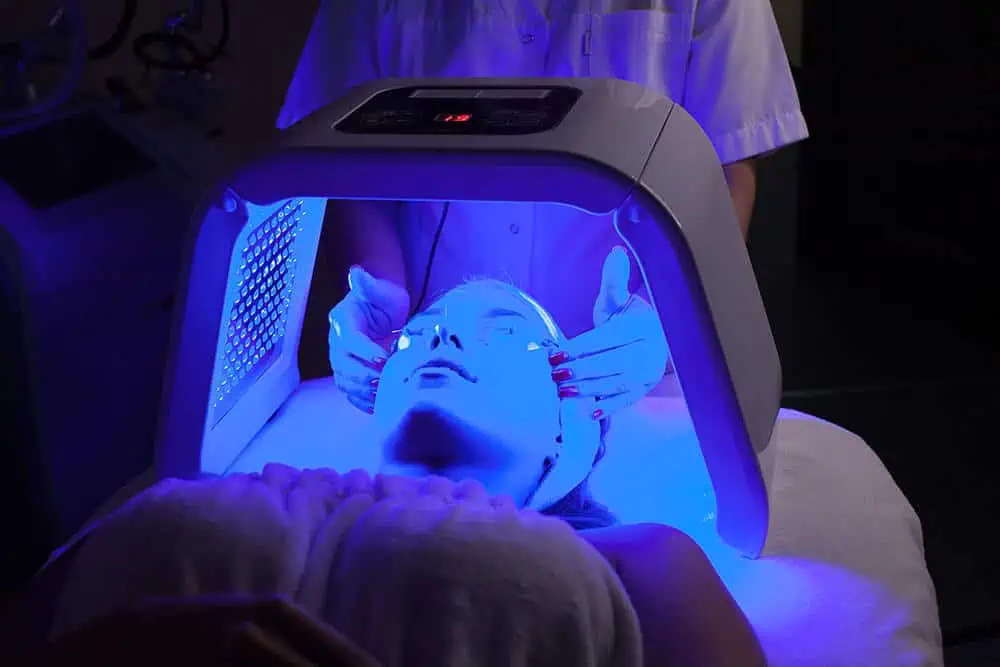
Different LED Light Colors For Different Results
Besides illumination, LED lights have a surplus of healing capacity. They can help cure your health, both mental as well as biological health. You can use different colors in particular circumstances to get various positive results.
Different colors of LED lights have various effects on physic and also on the mind. Green, red, blue, yellow, orange, and purple lights have different healing capacities. Check out the points below for a complete understanding of the above fact.
- Green LED lights have the power to strengthen your muscles. It can also help stimulate the production of growth hormones in your body.
- Red LED lights also have positive effects. It can help prepare your body for a relaxed and adequate sleep.
- Blue LED lights help keep you attentive and awake whenever you need some alertness.
- Yellow lights are helpful for mental health; they can cure depression.
- Orange LED lights can stimulate creativity and enhance the capacity for ideation.
- Purple LED lights are also helpful in healing the mind. They can be useful in reducing cognitive anxiety and emotional stress.
So, you can get that LED lights are much more than visual effects.
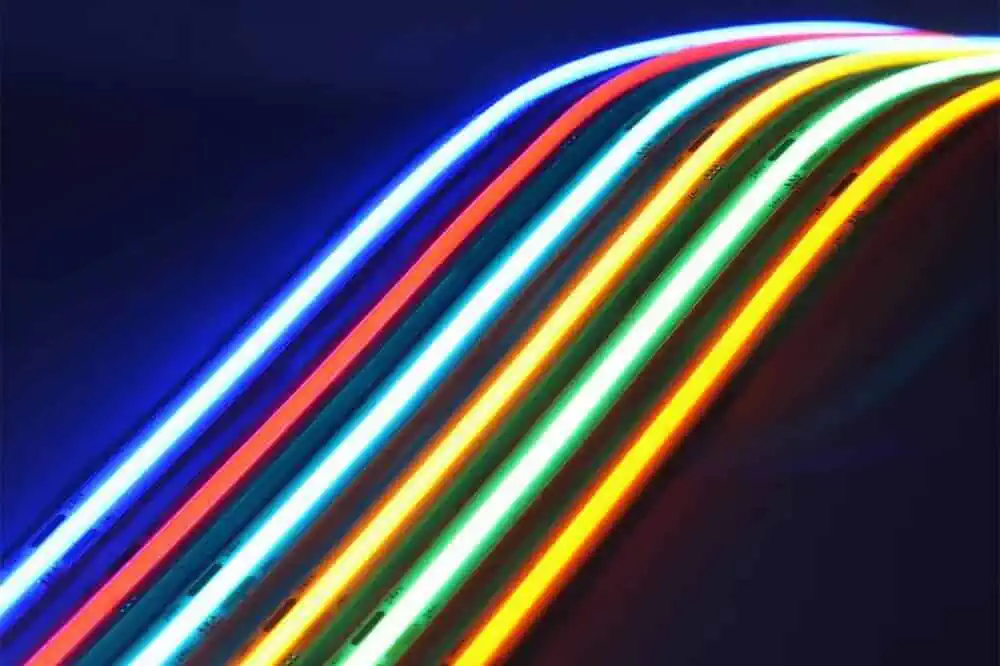
Busting Myths Associated With LED Lights
The current LED lights are much safer, more effective, and more energy-efficient. Yet various rumors suggest the harmful effects of LED lights. Check below some common complaints about LED lights.
Myth 1- LEDs Can Impair Your Vision
There’s a myth about LEDs (especially blue LEDs) that they can impair visibility. The current LEDs are as safe for your eyes as any other contemporary light source. LEDs have many healing capacities.
They’re helpful for skin therapies and also for various health therapies. The primary benefit of LED therapy is it doesn’t include harmful ultraviolet rays like other light therapies. LED lights contain blue light, which is a common part of natural sunlight.
An excessive amount of blue light is no doubt harmful, but too much use of anything is wrong for your body and mind. So, you should regulate your usage limit. Moreover, limit the time you stare at any LED screen or light. These include the blue-colored LED screen or light. Like you don’t stare at the sun, you mustn’t stare at any source of light for too long, including LEDs.
Myth 2- LEDs Are Toxic
LEDs contain toxic substances that can be harmful to your health is a myth. Current LEDs arrangements prepared by reputed manufacturers do not include harmful toxic substances. LEDs over fluorescent lights, like CFLs, include harmful mercury.
But it has the facility of recycling capacity. CFLs can be recycled with regular electronics. This means by using the recycling facility; you can emit its harmful aspects. The pleasing thing is that it can save your repeated buying cost.
The quality of your purchased LED is crucial here. LED lights from reliable manufacturers avoid toxic substances. Buying an LED light from less reputed sources could be perilous. If you are buying LEDs from a reliable manufacturer, the harmful toxic material is not an issue.
Myth 3- LEDs Affect Your Sleep
LED lights have a negative effect on sleep, which is another popular myth of modern times. This is not the whole truth. But, the orientation of LED lights during the daytime can be helpful. Exposure to blue light has a natural occurrence of sunlight. It can be good for refreshing your mood. Using LEDs in offices and factory floors helps enhance the workers’ focus.
The elevated grade of lighting is the reason behind that. Current LED arrangements come in a broad assortment of dimmers and color temperatures. These can help in setting appropriate light levels. Any bright light source can be disturbing to good sleep, but you can’t go back to the candlelight era. Instead of avoiding using LEDs, practice bedtime hygiene by regulating electronic devices’ usage. These devices include phones or Ipads, near bedtime.
Myth 4- LEDs Are Overshiny
The LED light designs of the previous times were over-shiny and white looking. But this concern isn’t, in any way, not suited to the present LED designs. Now you can get an assortment of LED lights with many color temperatures. These range from calm blue to bright luminous yellow. So, now you can limit your light exposure from bright white to cool blue.
Besides, the bright LED light can make a space more secure and safe from danger. You can use them to illuminate your college campus or city streets. This is a disregarded benefit of bright LED lights. Another useful thing about LEDs is that you can adjust them by pivoting them over the span of the day. The LEDs of an office or a college campus can be controlled according to its security measures.
Myth 5- LEDs Can Cause Skin Diseases
Some rumors claim that LED lights can cause skin diseases, which is false. Even LED lights have the power to heal various skin problems. They can help cure redness, wrinkles, scarring, signs of aging, acne, dark spots, and more. The modern-designed LEDs are used by dermatologists for their healing capacity.
Various spas in the cities are also using LEDs in their therapies. LED lights have been used as a skin healing treatment by doctors. Various wavelengths of the visible light range coordinate with different LED colors. They pierce the skin to distinct depths. Depending on their penetration depth, LEDs create various biological outcomes on the skin. They can be useful in the healing procedure of various skin diseases.
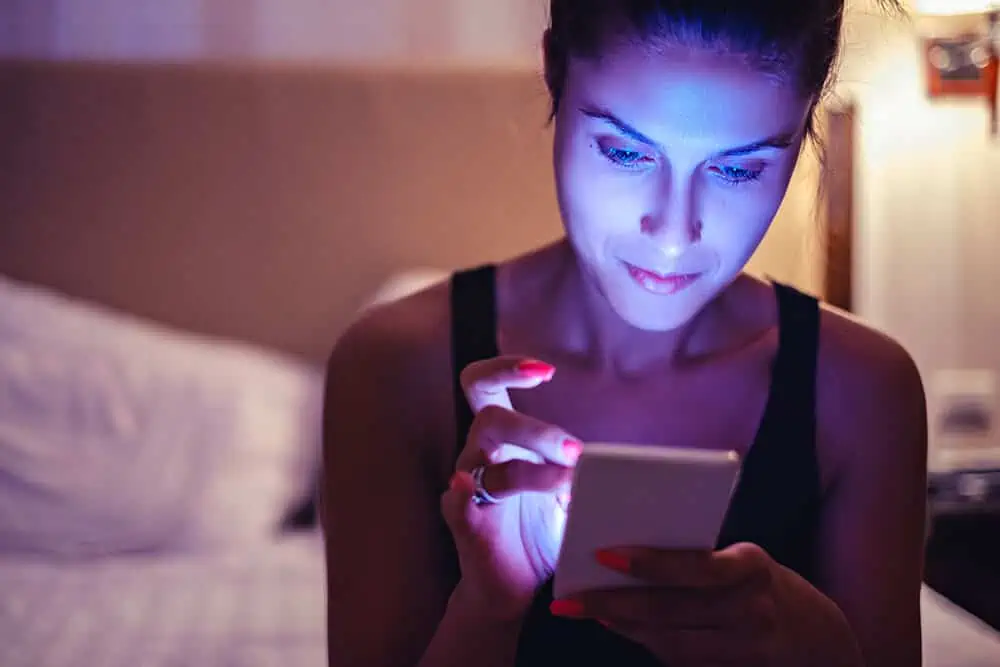
When Can LED Lights Prove To Be Harmful?
LED lights are super safe to use if you choose the best ones for use. But, certain situations can prove harmful if you ignore some precautions. Below are some of them that you should avoid to secure yourself from the harmful effects of LEDs.
- Over Exposure To Blue Light During the Evening
If exposed to blue light in the evening hours, your body continues to produce melanopsin. It’s a hormone that helps in producing energy during the daytime. If you are overexposed to blue light, you will fail to sleep in a natural manner. LED lights and other electronic devices have a considerable amount of blue light. Its overexposure can cause harmful effects on the body.
During the evening hours, your body’s demand for melanopsin decreases. But if you keep using these lights, it alters your natural biological clock. Placing a bulb near your face makes it difficult for your body to understand the natural pattern. The longer you expose yourself to blue light, the higher the melanopsin production. This makes it difficult to adjust to the natural environment. Many cool and warm-toned LEDs nowadays lessen the harmful effects of blue lights.
- Seeing LED Bulb With Naked Eyes For A Long Time
Staring at LED bulbs with naked eyes for a long time can damage your eyes. Studies reveal that prolonged seeing LEDs cause irreparable damage to the retina cells. The radiation from the blue band causes harm, and this is the reason you should use LED lights in a limited manner. Staring at LED bulbs for more than half a minute can be dangerous, and it is best to close your eyes.
Bright LED lights are used for larger areas like parking lots, streets, and shopping malls. It is best to use lights that are not high in brightness. Even staring at a cell phone for a long time causes retina damage. A high-quality, industry-tested LED light minimizes the dangers that come with blue light. If you want to save your eyes, limited exposure to LED bulbs is essential.
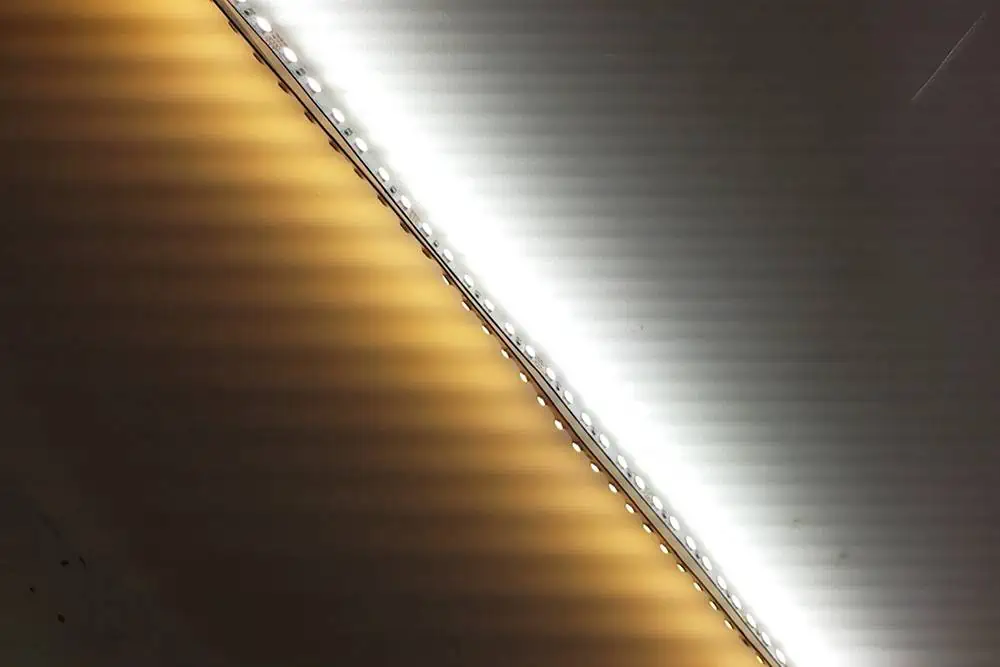
- Flickering LEDs Can Disrupt Your Focus
Flickering LEDs can disrupt your focus and cause performance issues. You may also get dizziness or seizures if you are overexposed to flickering LED. The flickering lights quickly change the emission. The eyes cannot keep up, and even under strong peak light conditions, pupils do not constrict.
Your iris responds to bright light rays by narrowing the pupil. It, as a result, protects the retina and enhances how well it processes the incoming image. In low light, the iris dilates the pupil to let in as much light as possible. If you stay in the flickering lights for long, you lose your focus and might be unable to make the right decision.
It is best to know about the root causes of flickering and avoid staying there for longer. Sometimes poor wiring can cause the flickering of LEDs.
FAQs
Yes, it is completely safe to have LED lights in your room. They do not contain harmful substances like lead and mercury. They do not emit harmful infrared and ultraviolet rays. If you use wisely LED lights, they’re safe to use in your room.
Yes, LEDs are much safer than any other regular lights. The standard safety concerns about LED lighting are not an issue. The blue light of the sun keeps you attentive during the daytime. By obtaining it, your circadian rhythm remains healthy and regular. LEDs can also encourage you to have a good sleep at night.
LED lights have a small quantity of harmful substances, and that doesn’t cause much harm. Only the scattered glass can prove dangerous, but other than that, it is not toxic if broken. LED lights do not contain mercury as it is not required to generate light. LED lights are a great environmental-friendly solution.
LEDs smell like chemicals since there’s plastic in them. Electrical wiring, paint, or residual grease also cause a chemical smell. Overloaded circuits, faulty outlets, incorrect fuses, and overheated insulation cause a chemical smell.
With surplus advantages, LED lights have an assortment of disadvantages as well. Check them all in the list below.
- LEDs have an increased up-front expense.
- It includes transformer potential.
- The possible color transformation over light life.
- Its performance arrangements are not simplified yet.
- Overheating of the LED lights can cause a decreased light life.
There is no reason you shouldn’t use LED lights. They are less harmful, highly durable, and eco-friendly. These do not emit ultraviolet light, but nowadays, blue light dangers are in the news. These lights help maintain melanopsin. It helps keep up the circadian rhythm of the body. It also enables an understanding of the difference between daylight and night.
Conclusion
LED lights are a new and exciting advancement in the field of technology. LED lights are completely safe to use if used in a limited way. They are safer than traditional lighting. The blue light emitted by LEDs is minimal. Other sources of blue light include cell phones, sunlight, and computers. You should limit your use to prevent your eyes and focus.
We are a factory specializing in producing high-quality customized LED strips and LED neon lights.
Please contact us if you need to purchase LED lights.

